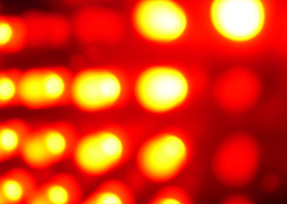How does an LED produce light?
Light is an energy form made up of basic units called photons. Photons themselves are obtained from electrons moving around the nucleus in an atom. Every time an electron moves from a larger orbit to a smaller one (becoming a positive electron), photons are released. In a light emitting diode, the electrons jump across orbits in the p-n junction every time an electric current is passed though it.
The diode itself is made up of a special material, so that photons of a specific frequency are produced. While some LEDs produce photons of a visible light frequency, others produce photons in the infrared frequency. This is why LEDs can be used for a variety of purposes, not just to provide light.
Where can LED lighting be used?
LED lighting has a broad range of uses. Unlike regular incandescent bulbs, LEDs are capable of providing light in a single direction. So they can be applied to tasks requiring a directed beam of light, i.e., aspect lighting and spot lighting. A strip of LED lights can be placed under kitchen cabinets to light the counter below. Similarly, LED light strips can be used to light up hallways, staircases, garden walkways, garage doors, etc. Small, concentrated LEDs make good lamp fixtures for reading, highlighting artwork, and as night lamps.
What are the benefits of LEDs?
LEDs are remarkably energy efficient. In incandescent bulbs, 98% of the energy generated is lost as heat. In comparison, LEDs generate almost negligible heat, so they require a lot less power to generate the same amount of light. LEDs are also more sturdy and less susceptible to breakage than incandescent bulbs. A typical LED can provide light for almost 50,000 hours until it needs to be replaced. LEDs are also safe to handle because they produce no heat and are cool to touch. In addition, LEDs can produce light in a range of colors, without requiring any additional filters.
The main disadvantage of LEDs is that they are sensitive to extreme heat. When subjected to excessive heat, the LEDs experience a decline in light output and also suffer a reduced lifespan. Another disadvantage is that LEDs are expensive to purchase. However, over time, the energy savings they provide far exceed the initial cost of the lights.










